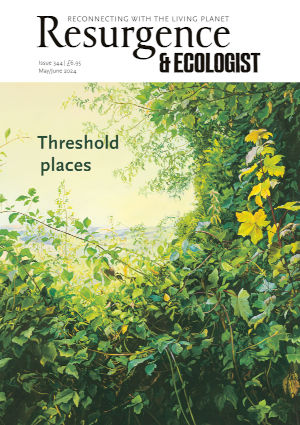Like many sports, tennis is a force for good. It has the power to overcome barriers, bringing people together from different backgrounds, often transcending social class, nationality, gender, politics, religion. It enriches lives and inspires millions. It can propel the lucky few from war zones to global superstars. For many others, it provides a source of entertainment, social activity and exercise with multiple cited health benefits, including a leading 9.7-year increase in life expect-ancy. Here, though, I want to look at the game’s sustainability record and profile.
How is tennis currently sustainable/damaging to the environment? The problem(s)
When protesters from Just Stop Oil showered court 18 at Wimbledon with confetti and jigsaw pieces in 2022, interrupting play, it was perhaps a sign of all sports needing to address their role in combating climate change.
At the top level, the men’s and women’s ATP and WTA tours consist of hundreds of tournaments around the world each year, amounting to a huge carbon footprint generated by international travel. Thousands of players, coaches, officials and media travel to each tournament, usually for a week or two at a time, before heading on to the next city. As a junior aspiring to reach the top of the game, I would travel to three or four continents a year, staying at each new location for between two and four weeks.
How could tennis become net positive and make a positive impact in the environment/Nature space? What action has been taken so far?
Governing bodies have their own sustainability agendas and initiatives, which come in a variety of shapes and forms. The International Tennis Federation’s annual operational report states that it has developed an environmental strategy aligned with global best practice and industry standards. The only published report was from 2021, when international travel was significantly reduced but actually only as a result of the coronavirus pandemic (which it acknowledges), and without a comparison it is hard to see visible sustained commitment and progress.
Mark Epps, director of communications for the Association of Tennis Professionals (ATP), says the sport has woken up to its potential to create positive change in the last five years. This has culminated in the launch of its strategy focusing on the three pillars of mental health, diversity and inclusion, and environmental sustainability. “When the players are struggling with the heat on court, it’s obvious,” Epps told me. “Turn on the TV, and there’s an evident business case, in addition to the moral argument.”
The environmental pillar has so far been the most visible. Signing up to the UN Sports for Climate Action Framework was a bold commitment to reach net zero by 2040, with a 50% reduction in emissions by 2030. For an industry predicated on travel, there’s no guarantee of success, but setting ambitious goals has provided direction and motivation, Epps said, and the ATP is doing what is within its control to get there.
Through a partnership with Infosys, players can track their carbon footprint through an app and choose to offset by buying carbon credits. Over 200 players signed up in the first year, with the top 10 published on the ATP website. The top three include the US’s Ben Shelton and Britain’s Cameron Norrie, each of whom received their share of a US$100,000 prize pool, to be donated to environmental sustainability initiatives of their choice. The app also helps educate about sustainability and has improved players’ and their teams’ awareness of the impact of their profession on the planet.
Gamifying the climate race and drawing on some of the most competitive instincts on the planet to save the planet can only be a good thing!
When it comes to a major redesign of the international schedule, Epps said this is part of conversations “at the top”, with the ATP Challenger Tour a way to show the art of the possible in terms of a more regional approach that percolates upwards. The tour could also collaborate with other global sports such as golf or Formula One to showcase its environmental agenda and create efficiencies at scale. There is a dependency on other industries. For example, the faster aviation decarbonises, the less reliance there will be on carbon-offsetting schemes.
National governing bodies have their own initiatives, too. The Lawn Tennis Association’s Environmental Sustainability Plan commits it to halving emissions by 2030 and achieving net zero by 2040, improving resource efficiency and biodiversity.
When it comes to the tournaments, each has its own sustainability agenda, with many seeking to reduce their environmental footprints through waste reduction. Wimbledon has committed to reaching net zero by 2030.
Annual reports on progress in this area are not forthcoming, so we will watch this space.
Is anyone researching/working on this?
Mainstream tennis media is so far not overly consumed or concerned by this issue. Christopher Clarey, former tennis writer for The New York Times, does not know of many articles that have been written on this subject. The focus has tended to be on goods and equipment such as sustainable tennis balls, and each tennis brand has its own sustainability model.
Should we care and, if so, why?
The effects of climate breakdown, with soaring temperatures and flooding, will affect players at all levels. Protests will probably continue to disrupt play if tennis cannot show that it genuinely cares and is willing to adapt and fully engage with the issues.
It’s great when players speak up on social issues. For example, in an interview with The Times, world singles number one player Novak Djokovic highlighted his campaign to spread the prize money to reach a wider pool of players and address the financial inequality in the sport.
Many players have considerable charitable commitments and causes, but it would be fantastic to see them speak up on environmental issues too, which is quite an ask when a career depends on international travel, not to mention the laser-like focus needed to reach peak performance. However, to show an interest and speak up about concerns authentically can make a real difference, with a likely ripple effect, as the ATP may show.
Tennis players can use their social platforms to help educate and inspire millions of fans around the world, whilst also encouraging the corporate leaders of the sport to keep making bold decisions to positively shape the future direction of travel.








